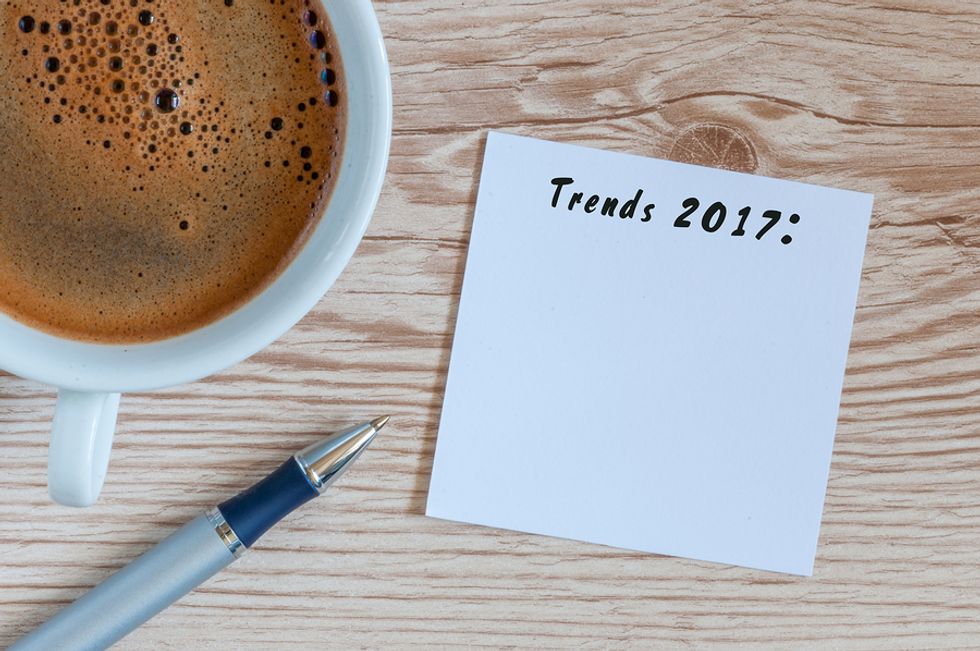
I'm hopeful that 2017 will be a year full of great opportunities for all job seekers actively searching, and for those passively open to new opportunities—which according to a new survey by JobVite happens to be 74% of us. Speaking of this survey, its results inject some serious optimism into the job search market, sharing that 69% of employers saw an increase in hiring with 39% reporting a significant increase in hiring and 35% planning to hire more than 100 new employees in the next 12 months. I hope it provides you with some much needed encouragement and optimism as you take a good look at your resume and start making changes for 2017. Here is a list of my top five resume trends in 2017. Related: 2016 Resume Trends – The New, The Now & What You Must Know
2017 Resume Trend #1: Cutting-Edge Resumes
I don't think we'll see many job seekers in 2017 using old Microsoft resume templates, worn out objective statements, and boring filler words such as “excellent communication skills" or “dedicated professional." I think by now most job seekers realize that just as technology is constantly changing, updating and getting better—so should all their career communications, including their resumes. Competition for top talent will be especially high in the industries of hospitality, healthcare, technology, and finance—the four industries projecting the highest growth in 2017. Recruiters are already reporting having a hard time finding qualified candidates and are revamping how they attract top talent. Now is the time to throw out antiquated resumes and cover letters and start fresh with a modern, visually engaging, first-class resume that helps you shine as a top candidate and gives you a competitive advantage over other candidates. We've already seen a huge rise in job seekers reaching out to experts for help with their resumes—whether that's reading a how-to book, following the top career blogs, or hiring an executive resume writer. Candidates know that in order to be seen by recruiters as top talent their resume needs to be crystal clear about their personal brand and the benefits they offer future employers. 57% of recruiters will be most-focused on growing their talent pipeline this year, and 56% said their top priority is the quality of their hires.2017 Resume Trend #2: Visually Engaging Resumes Work
Visual images process 60,000X faster in our brain than text. Let that sink in a minute. Paul Martin Lester a tenured Communications Professor at California State University, Fullerton summarized this perfectly when he said: “Something is happening. We are becoming a visually mediated society. For many, understanding of the world is being accomplished, not through words, but by reading images." If you're a visual learner you already know what that is like. It's why sites like Pinterest, Instagram, Periscope, and Snapchat have become so wildly popular; we are a visually driven society. I've been harping on this point for the last couple of years, that this should not be exclusive of our resumes. In fact, in 2017—more than ever before—incorporating visual interpretation of data into your resume is paramount. In a recent study, SkyWard reported content with relevant images get 94% more views than content without. Incorporating a visual representation of data can be as easy as hopping into Microsoft Word or PowerPoint and making a chart or graph. I also don't want to hear the excuse that you don't have numbers. You don't even need numbers to create a visual representation of data! You can use a pie chart to show industry keywords, skills that you possess, areas of expertise, and more. It's not limited to the sales industry and those with metrics to boast.2017 Resume Trend #3: Creative Resumes
Job seekers are getting creative and thinking outside the traditional resume box. This year we're going to see a rise in people using infographic resumes. I have clients ask me about them all the time, and the great news is the majority of employers would read an infographic resume. More and more job seekers are sending out one-page infographic resumes as an introduction, sending a full resume to touch base, and then following up afterwards. I've even seen resumes that were created to look like magazine spreads! Of course this approach may only work in creative fields, but infographic resumes can work in many different industries and at different career levels. I've had CFOs who've successfully used Infographic resumes to reach out to CEOs and Boards of Directors and landed great new opportunities that way.2017 Resume Trend #4: The Twitter Impact
For verbose people like me it's hard to “be brief." I love all the details—the point of most of my stories comes out in all the little details along the way. Be that as it may, brevity has become the norm in our Twitter-impacted society. We're so used to character counts on social media and having to get our point across in the shortest way possible. This has not escaped our careers and job searches. In fact, in a society where almost everyone finds themselves busier than humanly possible, keeping your resume short is in your best interest. I'm not advocating for a one-page resume, but I am telling you to be aware of text density within your resume. When possible:- Use a career snapshot instead of a paragraph summary as the introduction.
- Use bullets to break up information, and max your bullet list at five bullets.
- Incorporate white space throughout the resume to create a smoother flow.
- Be concise; say what you need to say in the fewest words possible.
- Use charts, graphs, and other visual images to communicate information whenever possible.

 Bigstock
Bigstock Bigstock
Bigstock Bigstock
Bigstock


